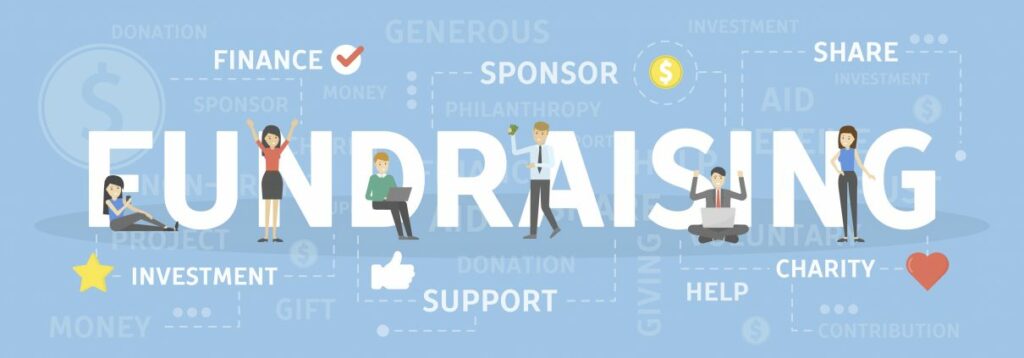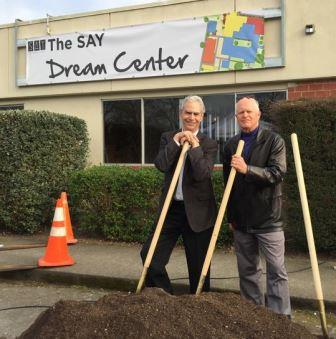Contributed by Cindy Morton, PRG Associate
We often hear from our clients about their desire to expand corporate support for their organizations. They point to the fact that, after all, the economy has been strong for years since the aftermath of the 2008 economic crisis. And it’s been particularly robust here in the Bay Area, home to mega-tech companies, as well as major banks, retailers and others.
So, they ask, why are we not getting more support from the corporate community?
First, we need to be clear about what corporate philanthropy is and how it fits into the overall picture of giving. We find a surprising level of misunderstanding leading to often unrealistic expectations. According to Giving USA, corporate giving represents just 5% of all philanthropic support (compared to 68% from individuals and 18% from foundations). Based on this data, it’s easy to see where the greatest opportunities are for increasing your fundraising. Yet, connecting with the business community is still an important element of a successful and diversified fundraising strategy both for its proceeds and for expanding any nonprofit’s network.
So, what steps can you take to attract corporate support?
Start first by understanding why a company creates a giving program at all. Most corporate philanthropy is part of a company’s overall business strategy. It can enhance profitability by creating a positive image while doing good. It’s a win-win.
Studies show that giving can also help companies attract and retain employees by supporting their philanthropic interests with matching funds and time off for volunteering. These are relatively low-cost ways to compete in a very tight Bay Area labor market. And, of course, many company leaders are simply people who, like everyone else, hold dear any number of charitable causes.
Philanthropy vs. Sponsorships?
In addition to understanding the motives of business owners and executives, it’s important to distinguish between corporate philanthropy and corporate sponsorships, to further guide you in working the best channel to secure funds.
- Corporate Philanthropy: These funds are typically driven by a corporate foundation, employee-directed gifts, and/or matching gifts. Typically, this type of support is most powerful (and can be the most generous) when alignment exists between the mission of a company combined with its overall business strategy and your nonprofit organization.
Employees themselves are an access point for a nonprofit and the connection is greatly improved when there is a champion inside the company. A recent survey showed that 71% of surveyed employees say it is imperative or very important to work where culture is supportive of giving and volunteering. Pro-bono services and/or in-kind support can also provide real value to a nonprofit.
Some regional examples include:
Wells Fargo Bank (consistently ranked in the Top 10 leaders Bay Area corporate giving)
https://www.wellsfargo.com/about/corporate-responsibility/community-giving/
Google.org (a new leader in corporate philanthropy)
Chevron (long-time Bay Area corporate philanthropic presence)
https://www.chevron.com/corporate-responsibility
- Corporate Sponsorship: This funding reflects a “business arrangement” from business and marketing divisions of a company where a business receives tangible benefits as well as visibility, e.g., event tickets, co-branding, naming opportunities, or event hosting.
Sponsorships can also be a pathway to expanding a relationship, towards a goal of broader philanthropic support. Keep in mind, this is essentially a marketing opportunity for the company. If you get that in-person meeting with a potential sponsor, remember to share what your organization has to offer, not only in terms of the tangible benefits mentioned. Be prepared to tell them how many consumers you touch within your community and how their support for your nonprofit positions them as a good corporate citizen. Corporate sponsorships may evolve into corporate sponsor partnership programs with diligent stewardship.
Examples of regional organizations with significant corporate sponsor partnership programs:
San Francisco Symphony – https://www.sfsymphony.org/Support-Volunteer/Institutional-Partners/Corporate-Partnerships
San Francisco-Marin Food Bank – https://www.sfmfoodbank.org/corporate-partnership-opportunities/
Fine Arts Museums of San Francisco – https://www.famsf.org/give/corporate-giving/corporate-sponsorship
Bank of Marin – https://www.bankofmarin.com/about-us/community-resources/
Remember, this summary represents general trends, and each community is unique. Like any donor, companies require on-going stewardship. In fact, while engaging corporate leadership is critical, giving is increasingly driven by employees and their volunteer involvement. Once these relationships are established, businesses often continue investing in an organization, providing sustainable, on-going support.
Corporate Philanthropy by the Numbers
- Americans gave $427.71 billion in 2018. This reflects a 0.7% increase from 2017.
- Corporate giving in 2018 increased to $20.05 billion—a 5.4% increase from 2017.
- Foundation giving in 2018 increased to $75.86 billion—a 7.3% increase from 2017.
- In 2018, the largest source of charitable giving came from:
Individuals at $292.09 billion, or 68% of total giving;
Foundations ($75.86 billion/18%);
Bequests ($39.71 billion/9%);
Corporations ($20.05 billion/5%).
Source: https://www.nptrust.org/philanthropic-resources/charitable-giving-statistics/


